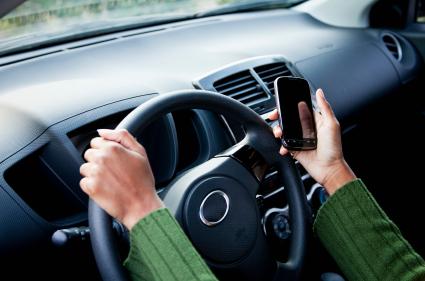 Teen drivers have long been associated with risky behaviors such as texting behind the wheel and driving under the influence.
Teen drivers have long been associated with risky behaviors such as texting behind the wheel and driving under the influence.
While these behaviors are still a problem, a passenger survey of their fellow teens indicates some progress on these fronts.
The study, by the Children’s Hospital of Philadelphia and State Farm, indicated that from 2008 to 2011, risky behaviors of teen passengers (ages 15 to 19 years) decline.
The number of teen passengers killed in crashes not wearing seat belts decreased 23 percent, the number of teen passengers driven by a peer who had been drinking declined 14 percent and 30 percent fewer teen passengers were killed in crashes involving a teen driver. More than half of teen passengers (54 percent) reported “always” buckling up in 2011.
Overall, the report measured a 47 percent decline in teen driver-related fatalities over the past six years. Still, as recent high-profile multi-fatality crashes with teen drivers illustrate, crashes remain the leading cause of death for U.S. teens.
“When most people think about those affected by teen driver crashes, they think of teens behind the wheel. This report includes encouraging news about teen passengers, who are often left out of the teen driver safety picture,” Dr. Dennis Durbin, co-scientific director of the Center for Injury Research and Prevention at CHOP and lead author of the report, said in a statement. “When you see the needle move, as we have in this report, it’s time to apply the gas on programs that encourage safe teen passenger behaviors, as well as those that address what causes teens to crash.”
Based on recent research which identified specific behaviors or factors associated with teen driver crashes, Durbin offered key areas he thinks have the greatest potential to further drive down the teen crash rate: reduce distraction from passengers and technology, increase skills in scanning, hazard detection and speed management, and increase seat belt use to improve a teen’s chance of survival in a crash.
Although the report indicates progress for teen driver safety efforts, risky behaviors, such as texting or emailing while driving, driving after drinking and low seat belt use, remain serious problems.
According to the report, “Miles to go: Focusing on Risks for Teen Driver Crashes,” a third of teens said they had recently texted or emailed while driving, a proven deadly distraction, especially for teen drivers.
Speeding remained a factor in more than half of fatal teen driver crashes, nearly the same percentage as in 2008. The percentage of teens dying in crashes with a blood alcohol level > 0.01 increased slightly, from 38 percent to 41 percent.
“Texting or emailing while driving is especially dangerous for teen drivers. We are encouraged that abstaining from cell phone use while driving is currently the norm for teens – most are not doing this dangerous behavior,” Durbin said. “To reach the teens that still do text or email while driving, messages should focus on teens’ positive safety beliefs about refraining from cell phone use while driving, rather than turning to scare tactics that always emphasize the negative consequences.”
The report, third in an annual series, provides evidence to support stronger Graduated Driver Licensing programs, which allow teens to gain experience under lower-risk conditions.
A comprehensive GDL program includes at least 50 hours of adult-supervised practice under varied conditions, limits teen passengers for the first year of independent driving, restricts unsupervised nighttime driving, requires seat belt use for the driver and all passengers and prohibits cell phone use while driving.
“Since 2005, State Farm and CHOP have been working together to improve teen driver safety. While this report highlights the gains we are making, we still can do much more to reduce teen driver crash-related injuries and deaths,” Chris Mullen, director of Technology Research, Strategic Resources at State Farm, said in a statement. “Promising strategies include programs that encourage parents to enforce GDL provisions limiting the number of friends their newly licensed teens may drive, as well as those that support safe passenger behavior and increased parental involvement in the learning to drive process.”
The study also found that 75 percent of all teen driver crashes were the result of a teen driver’s error. The most common issues include not properly scanning the driving environment and failing to detect or properly react to hazards (21 percent), driving too fast for road conditions (21 percent) and being distracted by something in or outside the vehicle (19 percent).
One in five females and one in four males driving with peers were distracted by something inside the vehicle just before crashing. As compared to females driving alone, those with passengers were four times as likely to be distracted prior to the crash.
Compared to males driving alone, males with peer passengers were almost six times more likely to perform an illegal maneuver and twice as likely to act aggressively. Females rarely drove aggressively before crashing, whether with or without peer passengers.
Motor vehicle crashes still remain the number one cause of death among teens in the U.S. Teen drivers (ages 16 to 19) have fatal crashes at four times the rate of adult drivers (ages 25 to 69).












